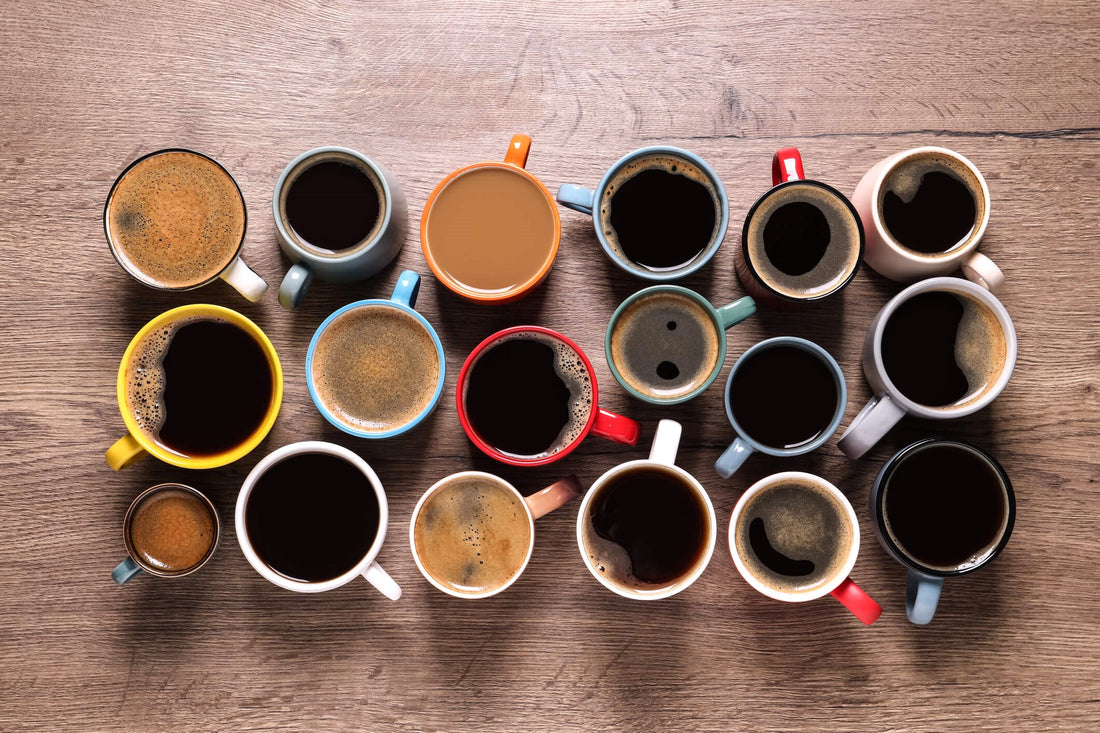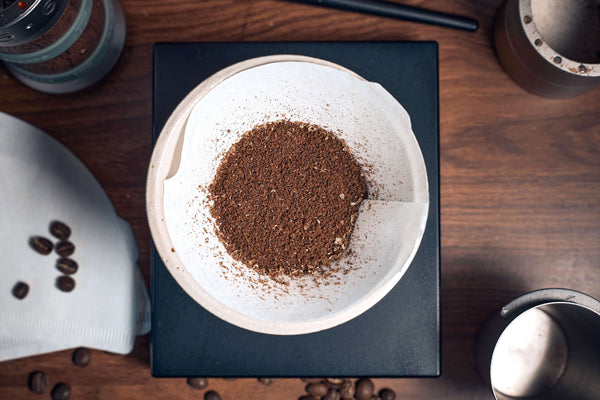
The Versatility of Coffee's Brew Ratio
tai attitude5 min read
When it comes to coffee brewing, there is one variable known as the brew ratio that determines the intensity, texture, and flavour attributes of the brewed coffee.
As the brew ratio of choice used to brew coffee impacts the sensory experience in the cup in such a way, it is a key piece in the decision-making process among baristas and homebrewers alike.
This article serves to explore the versatility of the brew ratio in coffee brewing by understanding and applying brew ratios to greatly enhance or tailor the brewed coffee to personal preferences.
What is a brew ratio?
A brew ratio refers to the amount of ground coffee in relation to the amount of water for the coffee-brewing process. It is typically expressed as a ratio, such as 1:15, which means 1 part coffee to 15 parts water.
Generally, deciding the brew ratio factors in the ingredients (coffee beans and water), equipment of choice, and skills.
For ease and consistency, we recommend not changing the ground coffee part and only altering the water part as required, such as 1:14, 1:15, 1:16, 1:17, 1:18, etc., which are the ranges for deliciousness for most brews.
If you prefer to not change the water part but rather alter the ground coffee part, the brew ratio sure gets messier, but it works too.
Some examples are:
1:15 brew ratio means 18g of ground coffee indicates 270g of water; for 20g, it would be 300g of water.
1:16 brew ratio means 18g of ground coffee indicates 288g of water; for 20g, it would be 320g of water.
Espresso brew ratios (EBR)
Espresso is unique in that it requires vastly different brew ratio numbers due to how it is prepared and served.
Espresso's own brew ratio is communicated as the espresso brew ratio (EBR). Delicious espressos are typically pulled with EBR in the ranges of 1:1.5, 1:2, 1:2.5, 1:3, etc.
Stating the obvious, espresso uses much less water.
On a side note, for espresso, the amount of ground coffee used is also referred to as the dose, while the amount of water used is referred to as the yield.
In essence, the brew ratio heavily depends on the coffee bean, water, equipment, and barista skills. Espresso has its own range of brew ratio numbers, but other than that, the function of brew ratio is just the same across all coffee preparation methods (espresso included).
Next, let us see how the brew ratio functions and learn how to apply it.
Strength and extraction aspects
Brew ratio is an interesting variable because altering it has an inverse effect on brewed coffee's strength and extraction, meaning increasing one will decrease another, and vice versa. To elaborate, we first break down what strength and extraction are.
Strength
Strength in the context of coffee refers to how strong or weak (concentrated or watery) the coffee beverage is. It is the relationship between the dissolved compounds of ground coffee and water.
The strength of a coffee beverage is measured as the total dissolved solids (TDS%).
Strength is particularly important, especially when the brewed coffee is intended to be used as a base to add in other ingredients, such as milk or cream. Strength decides how much "coffee taste" there is in the cup. Our goal is always for an ideal strength (neither too concentrated nor too watery).
Extraction
Extraction refers to how much has been extracted from ground coffee during the coffee-brewing process. It represents the overall flavour attributes of the cup.
The amount extracted from ground coffee is measured as the extraction yield (EY%).
Extraction is crucial for the overall flavour attributes of the brewed coffee. To put it simply, if the coffee tastes bitter, it is over-extracted; on the contrary, if the brewed coffee tastes dominantly sour, it is under-extracted. Our goal is for an ideal extraction (neither under- nor over-).
Adjusting to different brew ratios
Since what we are striving for in coffee brewing is to end the brew at the ideal strength and extraction (balance is key), and as this manifests deliciousness, in order to achieve this, we strive for an impeccable brew ratio.
Using sensory information as a guide, perceive the strength (thickness or thinness) and extraction (sour, sweet, or bitter) of the brewed coffee, and if necessary, adjust the brew ratio by one part—less water or more water—accordingly as follows for the next brew:
Using less water will result in higher strength but lower extraction in the cup.
The brewed coffee will taste thicker (with a higher strength) as less water is used. At the same time, having less water also causes ground coffee to be under-extracted, resulting in more sourness (lower extraction).
Using more water will result in lower strength but higher extraction in the cup.
The brewed coffee will taste thinner (lower strength) as more water is used. At the same time, having more water also causes ground coffee to be overextracted, resulting in more bitterness (higher extraction).
Bypass Brew Technique
Bypass brewing is a popular technique where water is added after the extraction phase (post-brewing). It is used to lower the strength (TDS%) of the brewed coffee without messing with its extraction yield (EY%).
Bypass brewing is considered a "hack" in coffee-brewing, as a certain amount of water is not used during the extraction phase (coffee-brewing process) and is therefore not responsible for how much gets extracted from ground coffee. However, this amount of water is added after brewing, and the calculation of strength is the measurement between the total dissolved solids of coffee and water; thereby, the added water will shift it.
In other words, the intensity and texture of the coffee decrease to a more enjoyable degree, while the overall flavour attributes of the brewed coffee remain intact. For instance, a strawberry jam note becomes a strawberry juice note.
Read more about the TDS% and EY% calculations for coffee.
Extra information
The best coffee's brew ratio is one that brews the best-tasting coffee. Such a brew ratio varies; it will have to be accessed through the barista's understanding, awareness, and adaptability.
With practice and exploration of different brew ratios, more layers of strength and flavour attributes can be discovered, rewarding the baristas who attempt such nuances.
Altering the brew ratio has an inversely proportional effect on the strength and extraction of the brewed coffee; it is a great variable in the arsenal of a barista when such a need arises.
It's important to note that the brew ratio is just one variable that determines the sensory experience of the brewed coffee. Other variables, such as grind size, brew temperature, turbulence, and brew time, each play their own role as well.



